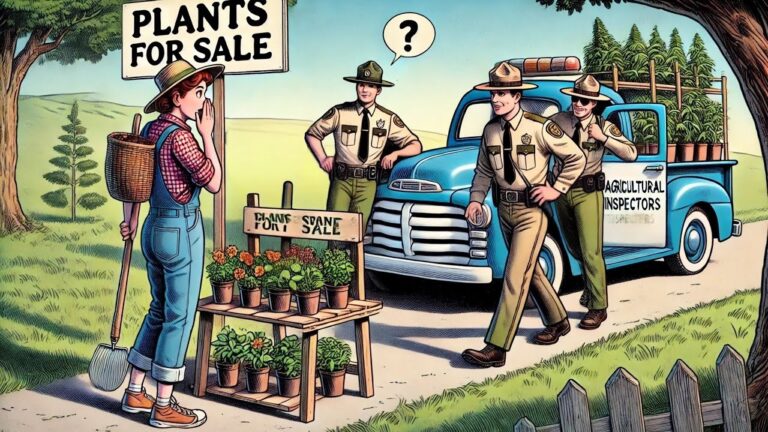Heavy clay soil can be a challenge for gardeners, but Jason from Fraser Valley Rose Farm offers practical solutions for transforming it into a fertile and workable growing medium. Whether you’re growing ornamental plants, edibles, or roses, understanding and amending your soil can make all the difference. In this article, we’ll explore Jason’s advice on identifying heavy soil, the amendments he recommends, and strategies for making the most of your garden.
Understanding Heavy Soil
Heavy soil, often dominated by clay, is characterized by its dense texture, poor drainage, and a tendency to form large, compacted clumps. This structure occurs because clay particles are extremely small and pack tightly together, leaving little room for air or water to move through. While clay soil retains nutrients well, its compactness makes it less ideal for many plants.
Jason suggests starting with a simple jar test to determine the composition of your soil—sand, silt, and clay proportions. This test provides valuable insights but, as Jason points out, most gardeners already know if they have heavy soil based on its behavior during planting or watering.
The real question is, “What can I do about it?” Jason’s approach focuses on practical, long-term solutions that improve soil health and structure over time.
Amending Heavy Soil: Proven Methods
1. Wood Chips: The Long-Term Solution
One of Jason’s most trusted amendments is wood chips, which he sources from local landscapers or services like ChipDrop. Over several years, wood chips gradually decompose, enriching the soil with organic matter and improving its structure.
In his garden, areas amended with wood chips show noticeable improvement. While the top layer may remain coarse, the layers beneath become darker, crumbly, and better aerated. This process mimics nature’s way of building rich topsoil in forests.
Addressing Concerns: Jason acknowledges common worries about wood chips, such as nitrogen depletion. He explains that while wood chips might temporarily draw nitrogen from the surface soil as they decompose, this effect is minimal and doesn’t significantly impact plant health. For deeper soil, where plant roots primarily access nutrients, nitrogen levels remain unaffected.
2. Compost and Organic Matter
Finished compost, animal manure, leaf mold, and other organic materials are excellent additions to clay soil. They enhance soil fertility, boost microbial activity, and improve drainage. Jason emphasizes that any form of organic matter, even kitchen scraps or garden clippings, contributes to long-term soil health.
3. Wood Ash and Charcoal
Wood ash and unburned charcoal bits from a wood stove are another amendment Jason recommends. These materials condition the soil while acting as a slow-release fertilizer. The combination of nutrient enrichment and improved soil structure makes them an effective, low-cost solution. However, Jason advises moderation to prevent over-alkalizing the soil.
4. Comfrey: A Dynamic Accumulator
Jason highlights the benefits of comfrey, specifically the sterile ‘Bocking 14’ variety. Comfrey’s deep roots penetrate clay soil, improving its structure while drawing nutrients upward. By chopping and mulching its nutrient-rich leaves, gardeners can create a natural soil conditioner.
He cautions against using wild comfrey, which can spread aggressively through seeds. Sterile varieties like ‘Bocking 14’ are easy to manage and ensure controlled soil improvement without risking invasive growth.
Plants That Thrive in Heavy Soil
Rather than fighting your soil, another approach is to select plants that naturally thrive in heavy clay conditions. For instance, roses perform well in rich, dense soil, provided it isn’t overly compacted. Other examples include:
- Perennials: Daylilies, sedum, black-eyed Susan
- Vegetables: Kale, cabbage, chard
- Shrubs: Dogwood, viburnum, forsythia
These plants not only tolerate heavy soil but can also help improve it over time by creating organic matter and loosening the surface.
Common Soil Amendments to Approach with Caution
While many sources recommend gypsum (calcium sulfate) for heavy soils, Jason advises against it unless a soil test confirms its necessity. Gypsum is most effective in sodic soils, which are rare in many regions. Without proper testing, adding gypsum may not provide any benefit and could be a waste of resources.
Adapting to Heavy Soil: Practical Strategies
Improving heavy soil is a gradual process, but there are ways to work with it in the meantime. Jason suggests:
- Raised Beds: For plants that require looser, well-draining soil, raised beds filled with custom soil mixes are an excellent alternative. This method bypasses heavy soil challenges entirely.
- Seasonal Crop Residue: Leaving organic material, like chopped leaves or garden clippings, on the soil surface encourages decomposition and organic matter accumulation.
Key Takeaways
Heavy clay soil is a common gardening challenge, but with patience and the right amendments, it can become a productive and fertile growing medium. Incorporating organic matter like wood chips, compost, and comfrey offers long-term benefits, while immediate strategies like raised beds and selecting clay-tolerant plants provide quicker solutions.
Jason’s hands-on experience highlights the importance of working with your soil’s natural characteristics rather than against them. By adopting a thoughtful approach, gardeners can enjoy healthier plants and more sustainable soil improvement.





